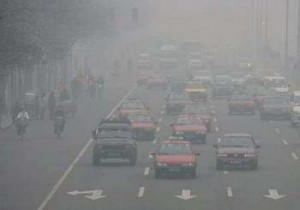Air Quality in 1600 World Cities Failed WHO Standards
Friday, May 9th, 2014 7:26:38 by Jamshed Sindhu
The quality of the air we breathe in most cities in the world is worse, warned yesterday the World Health Organization (WHO), increasing the risk of people suffering respiratory, heart and other diseases related pathologies contamination. Almost 90 % of the cities for which data has been collected in 91 countries – 1600 exceed those recommended by the WHO, closely related to the traffic levels of a type of pollution, particulate matter, and heating industry. The data again draw attention to a problem that a few weeks ago also put forward by WHO. It estimated that one in eight deaths in the world are caused as a result of exposure to dirty air: seven million in 2012.
“We have seen that the situation is getting worse, especially in countries experiencing rapid economic growth, emerging called. In industrialized countries, the data do not improve as had been doing in the last 20 or 30 years, “said Maria Neira, director of the Department of Public Health and Environment of WHO. Collect and publish this database, ” the world’s air quality and large urban population,” aims to contribute to ” raise awareness and mobilize ” about a problem, he insists, “has a very clear impact on our health.” By telephone from Geneva, WHO stresses that Neira has not wanted to “punish” the cities with worst exposing data but ” appreciate their work to monitor the situation and encourage others to do the same.”
The data presented yesterday update a database which now has more than 500 cities in the previous count, 2011 Only 12% of these cities breathe what the organization considers clean air, which in the case of PM10. – named for its diameter less than 10 microns, is an annual average of 20 micrograms per cubic meter. Peshawar and Rawalpindi, Pakistan both, are the most polluted cities, with records that multiply up to 27 recommended maximum: 540 and 448, respectively. Of the 20 cities with the worst air quality, half are in India. New Delhi marks 286.
Far from European data, which are around 60 in Bulgarian and Polish towns and down to 11 or 12 Reykjavik Copenhagen. In Spain, the most polluted city is La Linea de la Concepcion, 33. Barcelona, with 25, and Madrid, 22, exceed the WHO recommendations, but, as in the rest of Europe, the records are lower in the world rankings.
Half the urban population under study is exposed to levels at least twice the upper middle and WHO recommends not exceed recalls Neira. The causes are varied: the dependence on fossil fuels, and plants producing energy with coal; transport in private vehicles; low energy efficiency in buildings (how warm or cool and isolate) and the use of biomass for cooking and heating systems. “We talk about urban areas, so transportation, type of vehicle and type of fuel used, plays a major role,” says the expert.
Scientists point to the vehicles running on diesel engines as the main culprits of poor air quality in many cities. Microscopic particles and emit more nitrogen oxides than petrol. In mid- 2012 the WHO certified that diesel fumes cause lung cancer. The organization has recommended that the limit values ??for PM2 5 particles are reduced, also called fine particles (less than 2.5 microns in diameter), which generates the burning of fossil fuels, especially diesel vehicles. They are composed of toxic elements such as heavy metals, and are very dangerous because, being so small, easily penetrate the airways. Several studies have related to mortality from cardiovascular and respiratory causes.
The database also includes WHO measurements of PM2, 5 and shows that New Delhi, with a yearly average of 153 micrograms per cubic meter, is the dirtiest city in the world for this pollutant. Of the 20 cities with the worst records, 13 are in India. WHO has established 10 micrograms annual average as the threshold for health protection. In Europe, the worst data is in Poland, a city with over 40, and Czech, with several exceeding 30.
At the end of last April in another WHO report revealed that pollution is more harmful to health than previously thought. The link between exposure to dirty air and respiratory, cardiovascular, and cancer was much narrower. The organization quantified that about seven million deaths in 2012 were attributable to pollution, part atmospheric (2.6 million) and the inner part (4.3), which occurs within the home for cooking fires open coal stoves, wood or biomass.
WHO agency investigating cancer (IARC) updated a few months ago and placed the ranking the highest pollution level 1, for substances for which no scientific doubt about its relation to cancer.
Short URL: https://www.newspakistan.pk/?p=43800

















